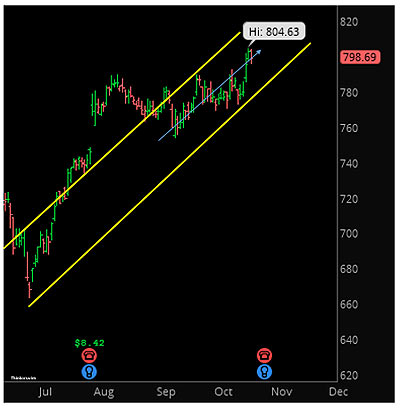
Purchasing power parity (PPP), a measure of the relative value of currencies that compares the prices of purchasing a fixed basket of goods and services in different countries. PPPs can be useful for estimating a more consistent and accurate comparison between different countries’ gross domestic product (GDP), cost of living, and other quality of life measures than using the market exchange rates of currencies. One option is to simply translate all national figures into one common currency (for instance, US dollars) using exchange rates from currency markets. But because market exchange rates do not always reflect the different price levels between countries, economists often opt for a different alternative. They create a hypothetical currency, called ‘international dollars’, and use this as a common unit of measure.
Globally, estimates of GDP based on market exchange rates indicated that in 2020 high-income countries accounted for 63 percent of the world economy, with middle-income countries collectively accounting for 36 percent. However, PPP-based estimates of GDP put middle-income countries collectively on top, with 52 percent of the global economy, compared with 47 percent for high-income countries. The exchange rates used to translate monetary values in local currencies into ‘international dollars’ (int-$) are the ‘purchasing power parity conversion rates’ (also called PPP conversion factors).
FAQs on Purchasing Power Parity (PPP)
According to the concept of relative purchase power parity, that three-point difference will drive a three-point change in the exchange rate between the U.S. and Mexico. So we can expect the Mexican peso to depreciate at the rate of 3% per year, or that the U.S. dollar should appreciate at the rate of 3% per year. In other words, under a free and inconvertible paper currency system, the rate of exchange between any two currencies is determined by their purchasing power in the respective currencies. This theory is called the purchasing power theory of the rate of exchange. ‘This theory asserts that the relative values of different currencies correspond to the relation between the real-purchasing power of each currency in its own country‘.
For non-participating economies PPPs are imputed based on a regression model. The World Development Indicators (WDI) database extrapolates PPPs for years not provided by the ICP. Unlike the absolute form of PPP, the relative form of PPP tells us the expected change in the exchange rate as a result of differences in countries’ inflation rate. To better understand how GDP paired with purchase power parity works, suppose it costs $10 to buy a shirt in the U.S., and it costs €8.00 to buy an identical shirt in Germany. To make an apples-to-apples comparison, we must first convert the €8.00 into U.S. dollars. If the exchange rate was such that the shirt in Germany costs $15.00, the PPP would, therefore, be 15/10, or 1.5.

PPPs play a vital role and are preferred in the analyses carried out by policymakers, researchers, and private institutions, as they do not show major fluctuations in the short run. In the long run, PPPs somewhat indicate in which direction the exchange rate is expected to move as the economy develops further. A second reason is that some things, like real estate and haircuts, can’t be shipped. Only ultra-wealthy global travelers can compare the prices of homes in New York to those in London. Thanks to McDonald’s standards, a Big Mac is basically the same sandwich anywhere in the world.
Marketing
PPP exchange rates are never valued because market exchange rates tend to move in their general direction, over a period of years. There is some value to knowing in which direction the exchange rate is more likely to shift over the long run. Because PPP exchange rates are more stable and are less affected by tariffs, they are used for many international comparisons, such as comparing countries’ GDPs or other national income statistics. Purchasing power parity is an economic term for measuring prices at different locations.
Thus, parity between two countries implies that a unit of currency in one country will buy the same basket of goods and services in the other, taking into consideration price levels in both countries. One may argue that the market exchange rate can be a measure of deviation from PPP. However, the exchange rate between two countries is typically determined by the supply and demand forces of the traded goods, services, and assets; the prices of non-traded goods are not taken into consideration, which leads to inaccuracy while comparing living standards. The Economist uses The Big Mac Index to identify overvalued and undervalued currencies. That is, ones where the Big Mac is expensive or cheap, when measured using current exchange rates. The January 2019 article states that a Big Mac costs HK$20.00 in Hong Kong and US$5.58 in the United States.[28] The implied PPP exchange rate is 3.58 HK$ per US$.
Economist gives bleak outlook for South Africa’s economic future – Creamer Media’s Engineering News
Economist gives bleak outlook for South Africa’s economic future.
Posted: Wed, 13 Sep 2023 13:48:00 GMT [source]
Price level differences imply that with the same income in US dollars, you could be on the verge of poverty in the US, or fairly well-off in rural India. For this reason, we need to consider purchasing power when comparing variables such as poverty rates between countries. In theory, once the difference in exchange rates is difference between isoquant and indifference curve accounted for, then everything would cost the same. Purchase power parity (PPP) is an economic theory that allows for the comparison of the purchasing power of various world currencies to one another. It is the theoretical exchange rate at which you can buy the same amount of goods and services with another currency.
Purchasing Power Parity formula
• Every few years, the World Bank releases a report that compares the productivity and growth of various countries in terms of PPP and U.S. dollars. Both the International Monetary Fund (IMF) and the Organization for Economic Cooperation and Development (OECD) use weights based on PPP metrics to make predictions and recommend economic policy. A reason for the prominence of this concept in economic research is the fact that most countries publish inflation data normalized to an arbitrary year, but not absolute price level data.
That is, PPP is the exchange rate at which one nation’s currency would be converted into another to purchase the same and same amounts of a large group of products. This theory states that the real cost of a good must be the same across all countries after the consideration of the exchange rate. Relative purchasing power parity (RPPP) is an expansion of the traditional purchasing power parity (PPP) theory to include changes in inflation over time. Purchasing power is the power of money expressed by the number of goods or services that one unit can buy, and which can be reduced by inflation.
The table below illustrates the necessary calculations using an Excel spreadsheet. As you can see, relative purchasing power parity is really just basic algebra. Relative purchasing power parity (PPP) states that the change in countries’ exchange rate should exactly offset the price effects of inflation differences between the countries.
What Is the Formula for Purchasing Power Parity?
Therefore, the index states the Namibian dollar was undervalued by 33% at that time. While it’s not a perfect measurement tool, purchasing power parity does allow for the possibility of price comparisons between countries with differing currencies. It’s used by many economists, international organizations, foreign exchange traders, and investors to examine economic productivity and the value of investments. If the prices used in the formula are actually the economy-wide price, or the price of the “market bundle,” then the PPP exchange rate tells us about purchasing power in the entire economy. It indicates that one currency may itself be under- or overvalued relative to the other currency. Since the actual currency exchange rate is higher than 18.5, we might conclude that the Kazakhstan tenge is undervalued or the US dollar is overvalued.
On the other hand, the companies at home don’t have monopolistic power and resort to charging lower prices for the same good. This price level can be considered a general price index made up of a different basket of goods and services. For example, in the United States, the consumer price index (CPI) is the price level of a different basket of goods. The Economist has developed the Big Mac Index, which tracks the PPP as measured by the price of a Big Mac in different countries. Gain unlimited access to more than 250 productivity Templates, CFI’s full course catalog and accredited Certification Programs, hundreds of resources, expert reviews and support, the chance to work with real-world finance and research tools, and more.
Through this statistical undertaking, prices are acquired and allocated to the basket of goods for each nation. It is the theory that a basket of goods in one country is worth exactly that in another. As long as the product is similar, it doesn’t matter which country produces it, the price will remain the same. In other words, consumers in the US can buy exactly the same number of Big Mac’s as those in Germany.
The relationship between the absolute and relative purchasing-power-parity (PPP) theories is restated theoretically. Then the relative PPP theory is tested using the GDP deflator and the cost of living as price-level concepts. The time periods are encompassed by 1950–1975; the countries are mainly but not exclusively in the Western industrial mode.
Whether this is a good idea or not depends entirely on the exchange rate between the two currencies. The correlation between productivity and the price level can be seen in this scatter plot here. The difference between the two GDP measurements stems from the differences https://1investing.in/ in the cost of living. PPP is based on the Law of One Price, which implies that all identical goods should have the same price. It is usually calculated using a similar basket of goods in two countries and is also used to evaluate under-/overvalued currencies.
It provides a map that shows the PPP ratio compared to the United States. That means the law of one price is not likely to keep prices the same in different locations. McDonald’s restaurants are not present in every country, which limits the index’s usage. Moreover, Big Macs are not sold at every McDonald’s (noticeably in India), which limits its usage further. As a general rule, the more similar the price structure between countries, the more valid the PPP comparison.
Why Is Purchasing Power Parity Important?
Suppose the US has an inflation rate of 2% and the Eurozone has an inflation rate of 0%, then the USD is expected to depreciate by approximately 2% relative to the Euro. RPPP also complements the theory of absolute purchasing power parity (APPP), which maintains that the exchange rate between two countries will be identical to the ratio of the price levels for those two countries. RPPP is essentially a dynamic form of PPP, as it relates the change in two countries’ inflation rates to the change in their exchange rate. The theory holds that inflation will reduce the real purchasing power of a nation’s currency. Thus if a country has an annual inflation rate of 10%, that country’s currency will be able to purchase 10% less real goods at the end of one year.

The new exchange rate, influenced by the differences in the price level, will converge towards a new equilibrium point where price levels are at the same level. The purchasing power parity theory indicates that the nominal exchange rate between two countries’ currencies is equal to the proportion of the countries’ price level. It is an economic theory that suggests that the difference in the price level for the same basket of goods between two countries is what drives the equilibrium exchange rate between countries. What is the difference between the absolute and relative purchasing power parity? The proportion of the change in the price level of two different countries is proportional to the change in the equilibrium exchange rate. According to the relative purchasing power parity, when there are differences in the price levels between two countries, these differences will cause the exchange rate between two countries to change.
How is Relative Purchasing Power Parity Used?
Take your learning and productivity to the next level with our Premium Templates. After the war, the Swedish economist Gustav Cassel suggested multiplying each currency’s pre-war value by its inflation rate to get the new parity. It is estimated that China’s 2019 GDP was $22.5 trillion—much more than the U.S.
- But because market exchange rates do not always reflect the different price levels between countries, economists often opt for a different alternative.
- The OECD table below indicates the number of US dollars needed in each of the countries listed to buy the same representative basket of consumer goods and services that would cost US$100 in the United States.
- PPP was created after World War I. Before then, most countries relied on the gold standard.
- PPP levels will also vary based on the formula used to calculate price matrices.
- Because it is impractical for Americans to fly to India for every haircut, they are unable to take advantage of these lower prices, thus, there is a persistent gap in the price that affects the real value of the Indian rupee.
- Since labor in China is less expensive, it costs less to produce one Big Mac than it does in the United States.
If tacos cost $7 in the US, according to absolute purchasing power parity, the price of tacos would be the equivalent of $7 in Mexico after having exchanged the US dollars for Mexico pesos. Absolute purchasing power parity suggests that the two countries’ price ratio is equal to the equilibrium exchange rate between the two countries. One of the main underlying principles of the purchasing power parity is a concept known as “the law of one price.” The law of one price is the idea that other things being equal, identical items sold on a worldwide market should have the same price. Goods and services that can be comparable in value and the equality they offer to customers will tend to converge towards the market equilibrium, resulting in the same prices for both countries. PPP calculates this “reference point” exchange rate by comparing how much it would cost to purchase the same basket of goods in one country compared to the other.